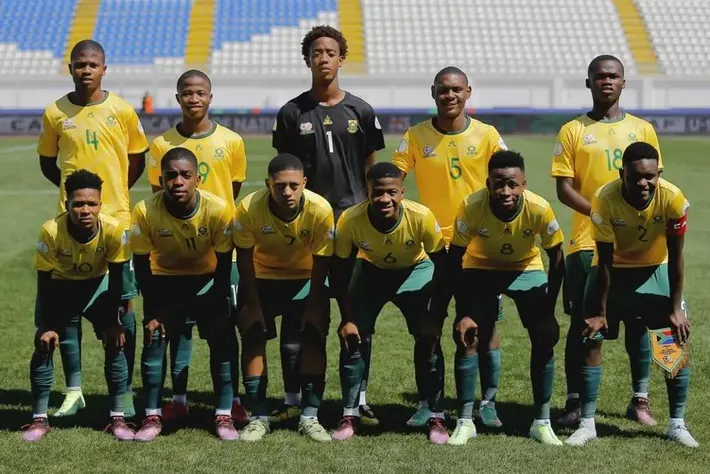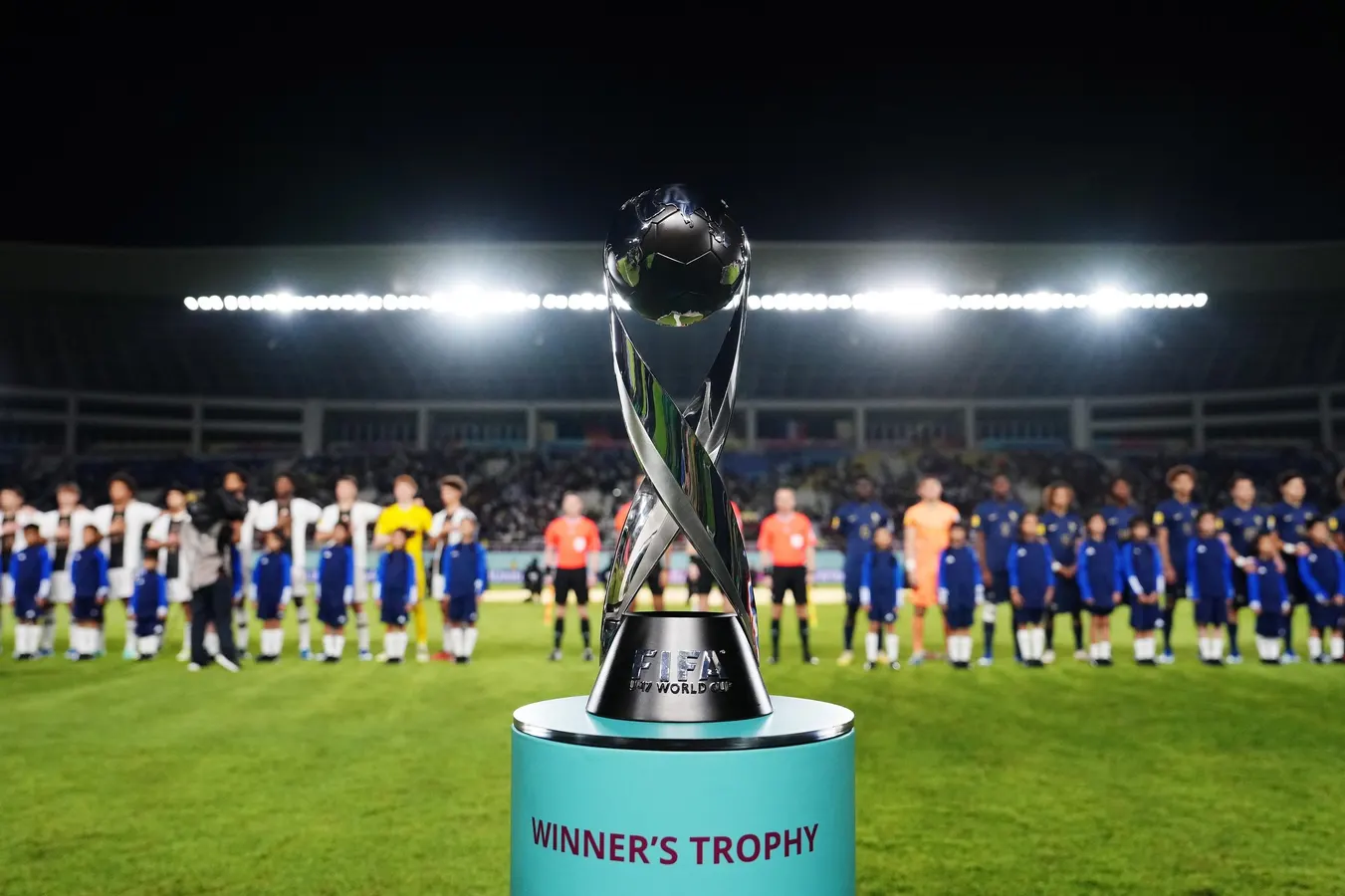Africa’s Rising Stars Ready to Shine at the 2025 FIFA U17 World Cup in Qatar,As the world turns its gaze to the sand-dusted pitches of the 2025 FIFA U17 World Cup in Qatar, a thriving wave of young African talent arrives filled with hope and determination. With the tournament expanded to 48 teams and set to be played from November 3 to 27, the stage is now grander than ever and the continent’s hopefuls know their moment has come.
For Africa, this is more than just a youth competition. It’s a chance to announce progress, to show that grassroots, academies, and national programs are bearing fruit. The coaches speak of growth not merely in results but in character, collective identity, and purpose. It’s about young men carrying not only a ball, but the hopes of their communities and countries.
Continental Representation: Africa’s U17 Delegation
Africa will be represented by ten nations at the tournament, each carrying a unique story of qualification, aspiration, and challenge. Among these teams, some are battle-hardened in youth competitions, while others are making their debut, each bringing fresh energy to the global arena.
While traditional powers like Senegal and Mali arrive with reputations forged in past tournaments, newcomers such as Uganda set off with fresh hope and little to lose. They are united by a single ambition: to grow, to compete, and to build memories that will last long after the final whistle.
Spotlight Nation: Senegal – Tradition Meets Expectation
The Lions of Teranga, Senegal’s U17 side, arrive as one of the continent’s most consistent performers at this age level. There is quiet, simmering expectation: this is a group that knows how to reach tournaments, understands the rhythm of global youth football, and yet still seeks to break through to the deeper rounds. Their challenge will be to translate experience into boldness, and structure into spark.
Coach and players alike know that coming to Qatar is not enough; they want to make a deep run, to show potential, not just participation.
Spotlight Nation: Mali – Youth Football’s Trusted Powerhouse
Mali’s youth teams have a strong track record. They arrive with a reputation, a system behind them, and a sense of continuity. For the Young Eagles, their promise lies in maintaining balance between talent and maturity, between individual flair and team discipline. In tournaments like this, a burst of skill can turn heads, but the real progress comes from playing the long game: resilience, tactical awareness, and mental strength. Mali’s youth setup knows that, and the players are ready to write the next chapter.

Debutants and Dark Horses: Uganda and Zambia Lead the Fresh Faces
Uganda
The Uganda Cubs will make their first ever appearance in a FIFA World Cup event at the U17 level. Placed in Group K alongside heavyweights like France, Chile, and Canada, Uganda’s atmosphere is one of excited underdog optimism. The draw may read tough, but the group stage is a classroom as much as a competition, and for many of these players, this will be the first time they walk into a stadium with global colors on their backs.
What makes their story compelling is not just the debut itself, but the sense of national vision it reflects. For Uganda, this is a statement: we’re writing our name on the map of youth football.
Zambia
Zambia are another nation arriving with fresh energy. Their draw placed them in Group H alongside formidable teams such as Brazil, Honduras, and Indonesia. While the path is steep, it is exactly this kind of challenge that forges character. Zambia’s appearance reminds us that the U17 World Cup is less about predictions and much more about promise. Middle-of-the-road in strength, high in ambition, they’ll be one side to watch for sparks, if not full-blown fireworks.
Competitive Landscapes: Groups and Opportunities
The draw for the tournament has handed each African hopeful a unique set of challenges and opportunities. For instance, South Africa’s U17 team found themselves in Group A alongside hosts Qatar, Italy, and Bolivia.
That mix of host nation, European tradition, and South American influence offers both danger and possibility. It is not simply about avoiding defeat, but about seizing moments: the moment of catching a world power off guard, the moment when a young player scores his first tournament goal, the moment when a team bonds under pressure.
In other groups, the themes will be familiarity versus novelty, experience versus hunger, tactical discipline versus raw exuberance. For Africa’s ten representatives, the pathway out of the group is increasingly realistic given the expanded format of 48 teams. The key will be seizing that pathway.
Key Themes for Africa’s Hopefuls
Development Over Delivery
Many African youth programs have shifted their focus from simply qualifying to sustainable development. What matters now is that players gain exposure, learn professionalism, and bring that back to domestic and national leagues. These tournaments become stepping stones, not just trophies.
Identity and Pride
Wearing the national colors at a World Cup, under the bright lights, can transform a teenager into an icon in his hometown. The psychological uplift of representing one’s country cannot be overstated, particularly for African players carrying deep community hopes.
Adaptation to Global Styles
African teams historically win or lose on two axes: physicality and talent. Now, learning to handle tactical systems, disciplined pressing, and changing in-game situations is equally critical. The teams that combine instinct with structure will shine.
The Moment of Breakthrough
It is understood that not every team will win the tournament, but every team can break through a barrier. Whether that means advancing from the group, winning a knockout match, or simply earning respect on the world stage, these milestones matter.
Stories Beyond Football
These young players come from diverse backgrounds, many with limited resources. Their presence on a global stage evokes hope for scholarships, future professional contracts, uplifted families, and the power of sport to transform lives.

What to Watch During the Tournament
- Who steps up early. An African side that opens with confidence and structure may build momentum.
- Set piece strength. In youth tournaments, dead balls often decide matches. Teams that defend and attack them well usually gain an edge.
- Mental resilience. Going behind or conceding an early goal is common at this level. The teams that stay calm and regroup will benefit.
- Player narratives. Keep an eye on individual breakout stars, those who read the game, who show leadership, who carry their team.
- Momentum back home. After Qatar, the question will be how many of these players go back and change domestic football systems, inspire younger boys, and raise the bar of youth development.
African Hopefuls as Ambassadors for Change
Beyond the pitch, these U17 squads serve as ambassadors for the continent’s future. In a tournament where global eyes will watch, Africa’s hopefuls carry stories of investment in academies, of community hopes, of a generation that dreams bigger than ever before. Their success isn’t only measured in goals or wins but in how they change perceptions: that African youth football can be tactically savvy, that African academies can produce world-class prospects, that when given opportunity, African teams can make world tournaments not just appearances but statements.
Looking Ahead: What Success Looks Like
For Africa’s hopefuls at the U17 level, success might look like:
- Advancing from the group stage.
- Winning at least one knockout match.
- Producing a standout moment such as a goal, a save, or a team turnaround.
- Each player returning home changed, more confident, ready to lead.
- The ripple effect of more youth programs, more scouts, and more international pathways for young Africans.
Final Thoughts
As November approaches and Qatar beckons, Africa’s U17 hopefuls arrive full of belief. They know the world will watch. They know the challenge is great. But they also know their moment is here. This tournament is not just about being good, it’s about being brave, about being resilient, about being African and proud on a global stage.
Whether it’s Senegal seeking breakthrough, Mali asserting consistency, Uganda making history, Zambia embracing their chance, or South Africa chasing new heights, each team carries not just their country’s emblem but a story of hope. And when those young players walk onto the turf in Qatar, they will not just play for points, they will play for possibility.
Do follow Gulf Magazine on Instagram.
Also Read – Kerala CM Meets Qatari Minister to Boost Investment and Strengthen Bilateral Cooperation



